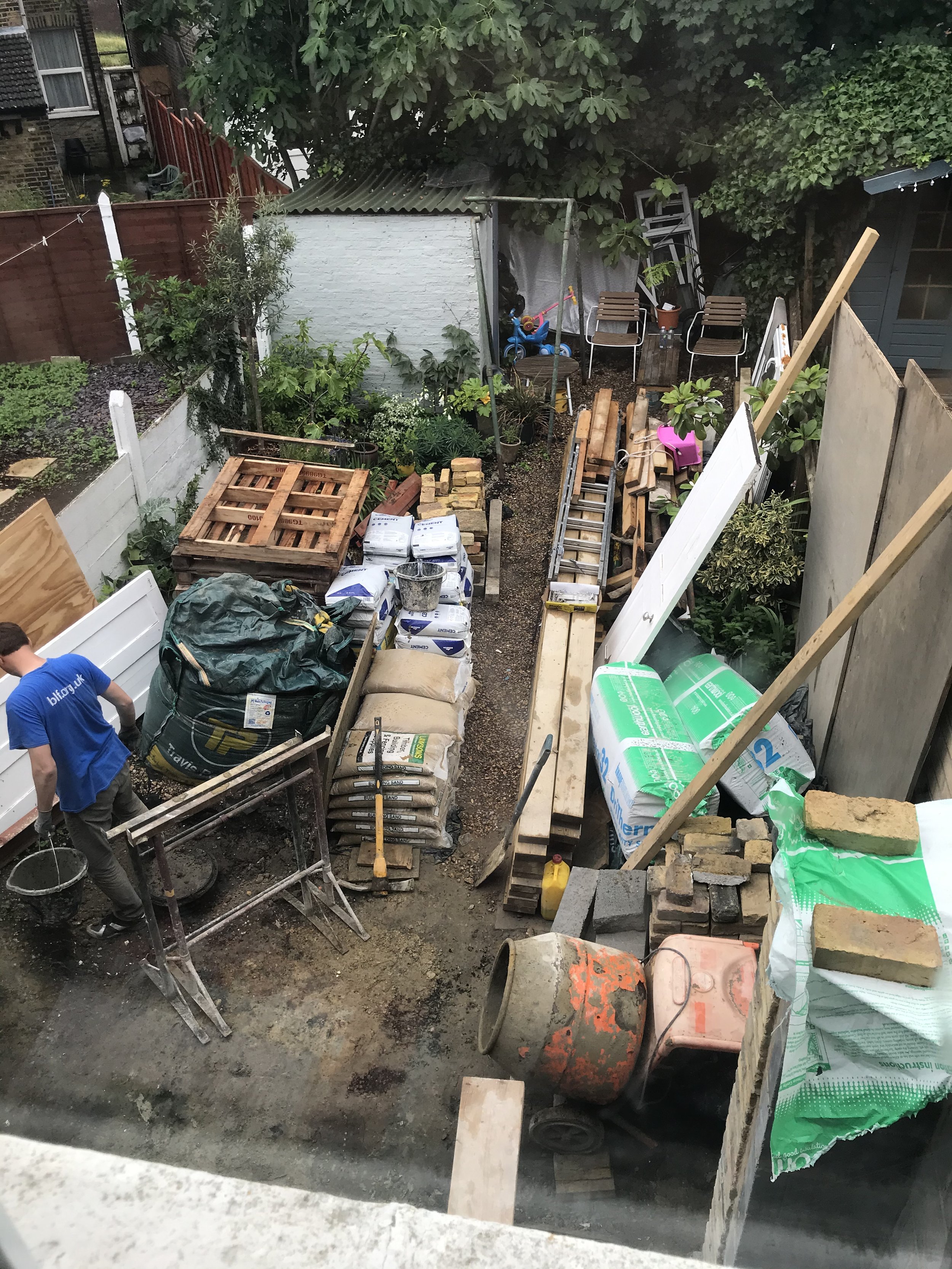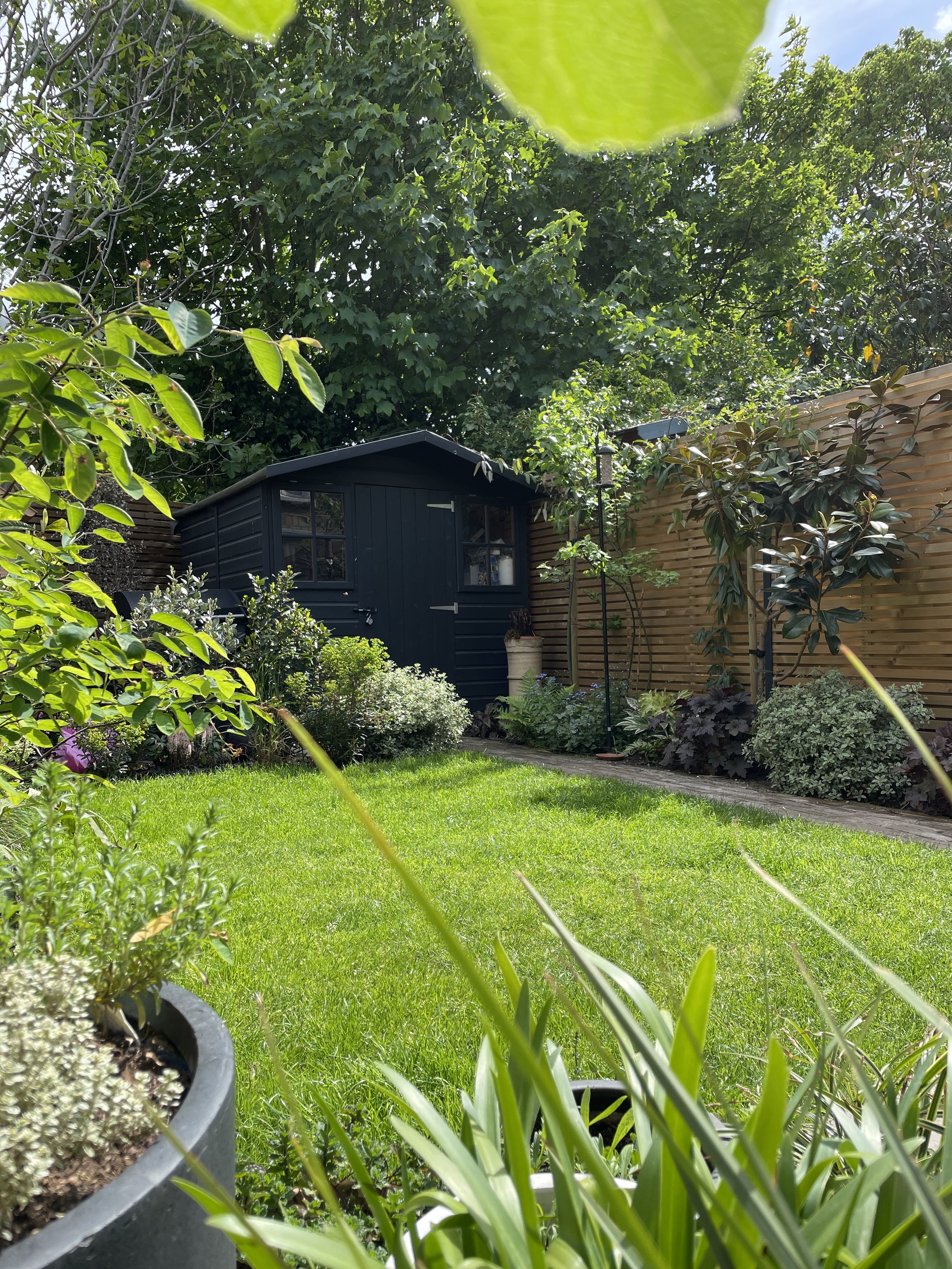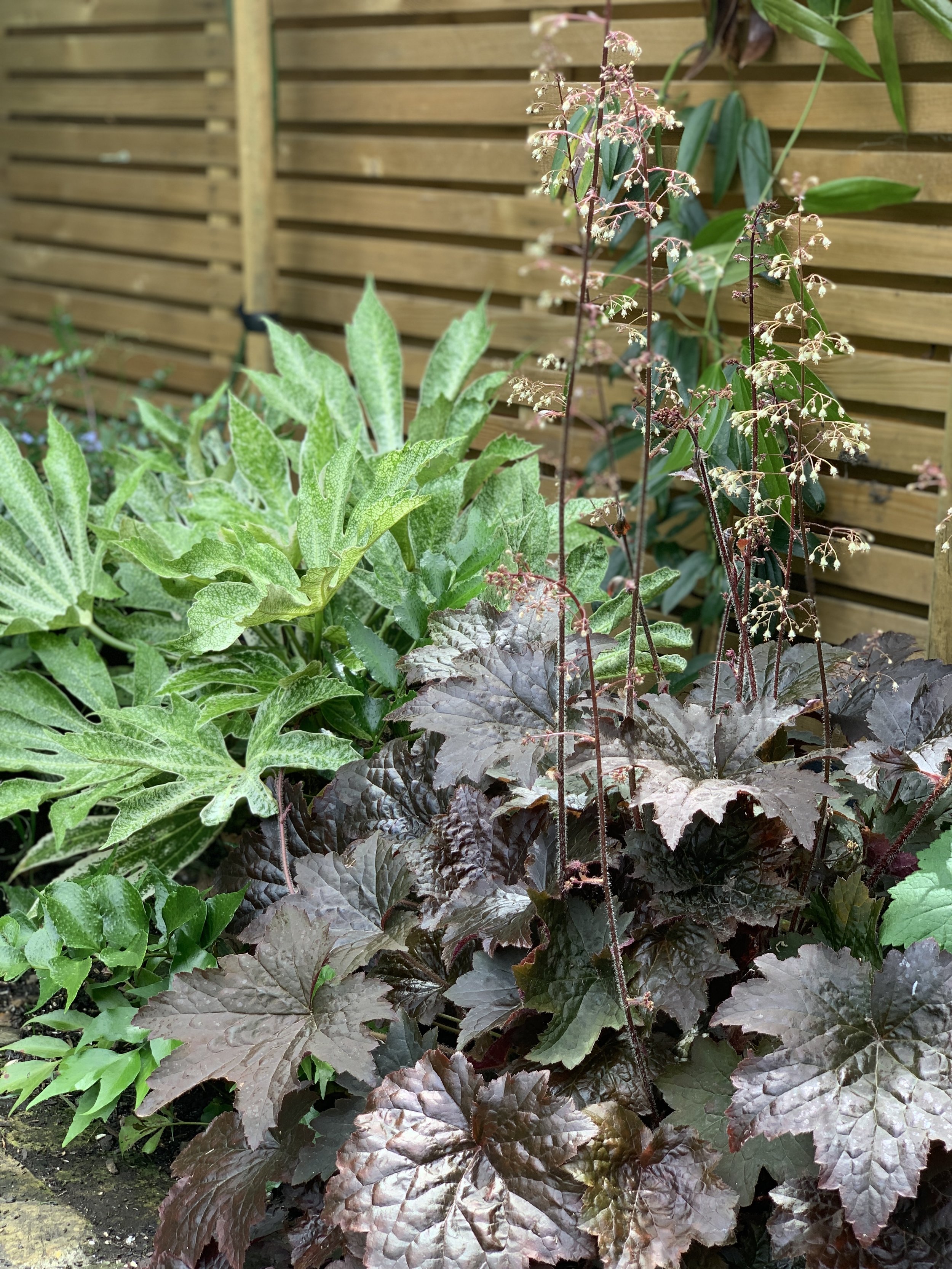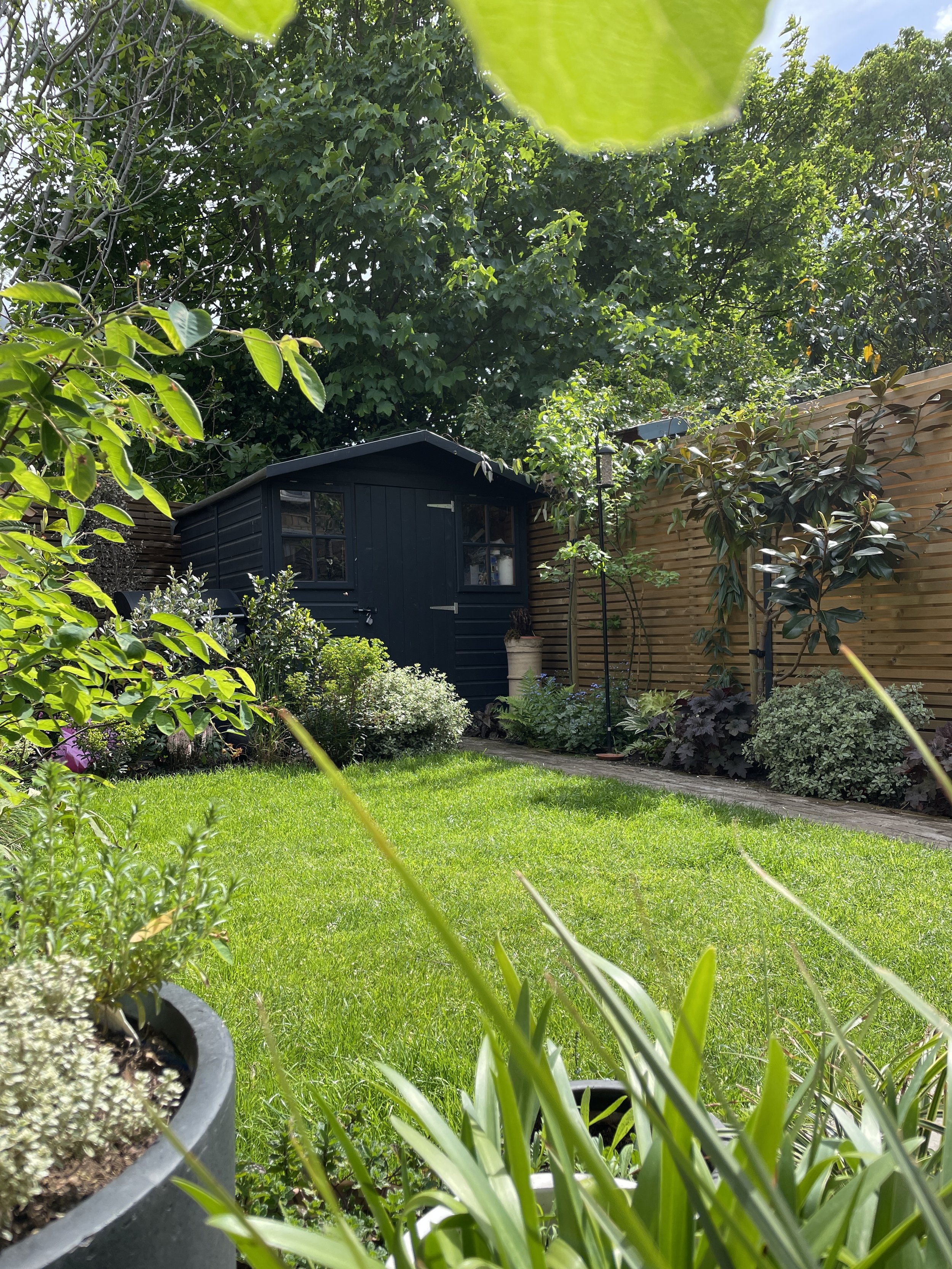Over the last couple of years we have transformed our small city garden from a building site to a calming space that we love, on a budget. Here we share our tried and tested tips and tricks for keeping costs down.
During some building work on our house our garden was used as a storage space and dumping ground for all the building materials and waste. We have a young family so reclaiming the garden was top on the priority list, but budget meant we had carried out much of the work ourselves, making savings where we could.
Reusing materials
During the works on the house, original external walls were knocked down and the bricks became our garden path. We spent hours sifting through the spare original London Stock bricks to find enough to create our garden path. The bonus - from the moment the path was laid it looked like it had been there forever.
We kept the chimney pot that was removed during the building work and it now sits in a shady corner with a tree fern on the top for added height. See image below.
The biggest outlay in terms of cost, and something we bought new, were the fence panels. We searched far and wide to find ones in this double-slatted style that didn’t cost the earth. We were also lucky to have neighbours on both sides who agreed to pay half of the materials, as both sides of our fences are shared between us. The fence panels are from Wickes although they have doubled in price since we bought them nearly two years ago!
Sourcing secondhand plants
Facebook Marketplace or local resident groups can be a great source of cheap or even free plants. It's also a much more sustainable way of shopping than buying new, you just need to make sure you can transport the plants home yourself and of course be careful not to hand over any money until you are have the item. Tip - when you view the plants, check for signs of pests and diseases.
Right plant, right place
If you are buying plants to add instant impact in a garden make sure you do your research first. Gardening is a brilliant learning curve but it's not all down to chance; understand the amount of light in each part of your garden, how sheltered or windy it is, know the type of soil and use that knowledge to purchase the most suitable plants to avoid disappointing losses.
Propagation
It is pretty easy to divide many perennials by digging them up and splitting them down the middle with a sharp spade or two forks back-to-back and prising them apart to make new plants for free. For summer flowering perennials this is best done in spring or autumn. Plant lovers are a generous bunch so get making friends and see what freebies you can gather (and in turn pass on to others later down the line).
This Persicaria pictured below self seeds, so I have dug up some of the little seedlings from near the base of the mother plant to pass on to friends and family.
Grow from seed
Although it requires some patience, it is extremely satisfying to grow your garden plants from the humble seed. And they don't just have to be annuals (that last just one season). Some perennial plants I enjoying sowing from seed are Astrantia, Echinacea, Verbena. You can search for seed swaps taking place near you as a brilliantly waste-less way to get growing, especially as you can start seeds off in pretty much any old container from your recycling! You can also experiment with saving seed from your own flowers once they have set seed. E.g leave poppy heads to dry on the plant then simply shake the seeds into a paper bag and store until spring or sow between August and October.
And for me the best thing about gardening is that it’s a never-ending project that I’m constantly learning from. Hope you have enjoyed reading a little about our garden journey!











